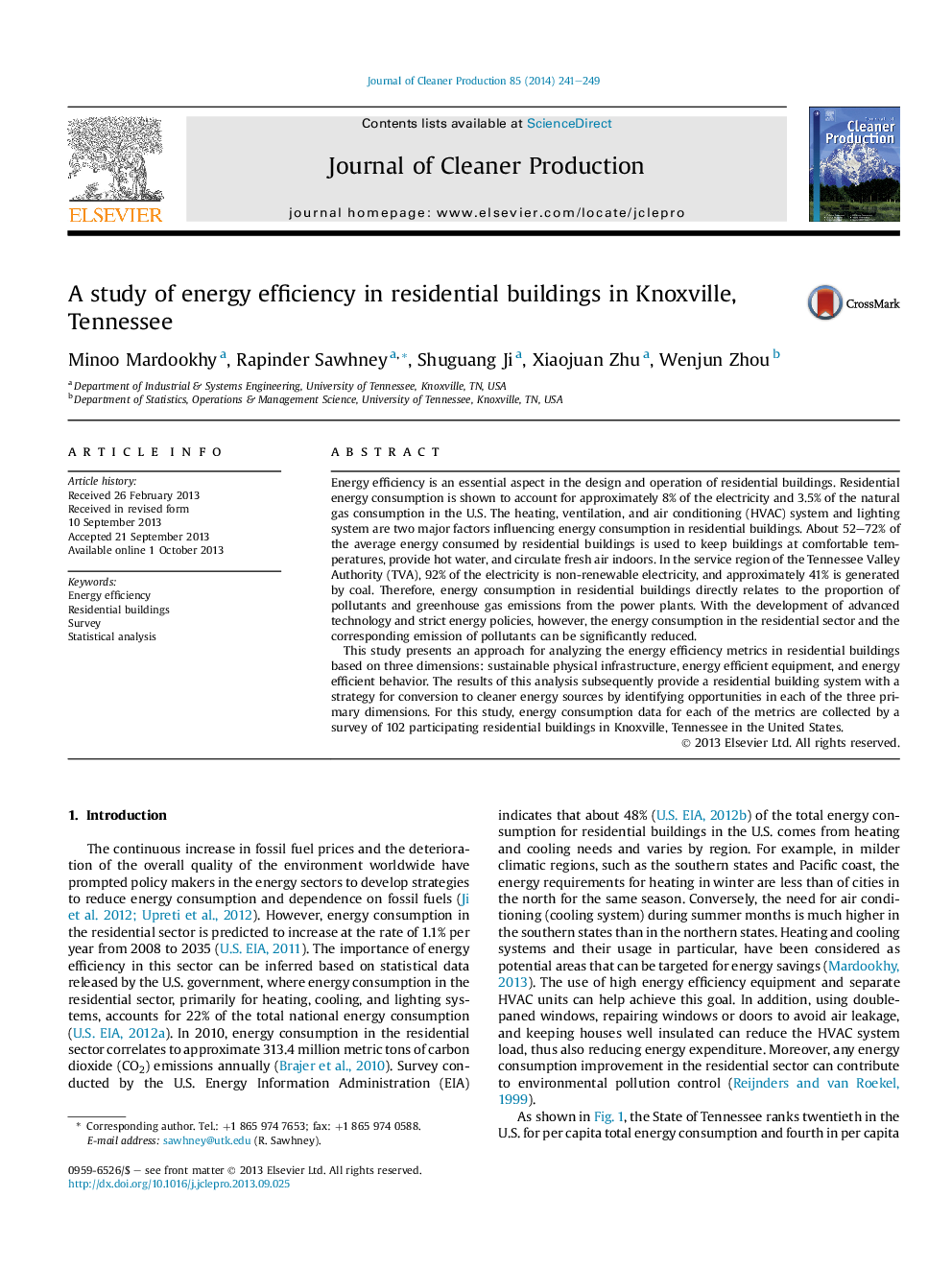| Article ID | Journal | Published Year | Pages | File Type |
|---|---|---|---|---|
| 1744817 | Journal of Cleaner Production | 2014 | 9 Pages |
Energy efficiency is an essential aspect in the design and operation of residential buildings. Residential energy consumption is shown to account for approximately 8% of the electricity and 3.5% of the natural gas consumption in the U.S. The heating, ventilation, and air conditioning (HVAC) system and lighting system are two major factors influencing energy consumption in residential buildings. About 52–72% of the average energy consumed by residential buildings is used to keep buildings at comfortable temperatures, provide hot water, and circulate fresh air indoors. In the service region of the Tennessee Valley Authority (TVA), 92% of the electricity is non-renewable electricity, and approximately 41% is generated by coal. Therefore, energy consumption in residential buildings directly relates to the proportion of pollutants and greenhouse gas emissions from the power plants. With the development of advanced technology and strict energy policies, however, the energy consumption in the residential sector and the corresponding emission of pollutants can be significantly reduced.This study presents an approach for analyzing the energy efficiency metrics in residential buildings based on three dimensions: sustainable physical infrastructure, energy efficient equipment, and energy efficient behavior. The results of this analysis subsequently provide a residential building system with a strategy for conversion to cleaner energy sources by identifying opportunities in each of the three primary dimensions. For this study, energy consumption data for each of the metrics are collected by a survey of 102 participating residential buildings in Knoxville, Tennessee in the United States.
